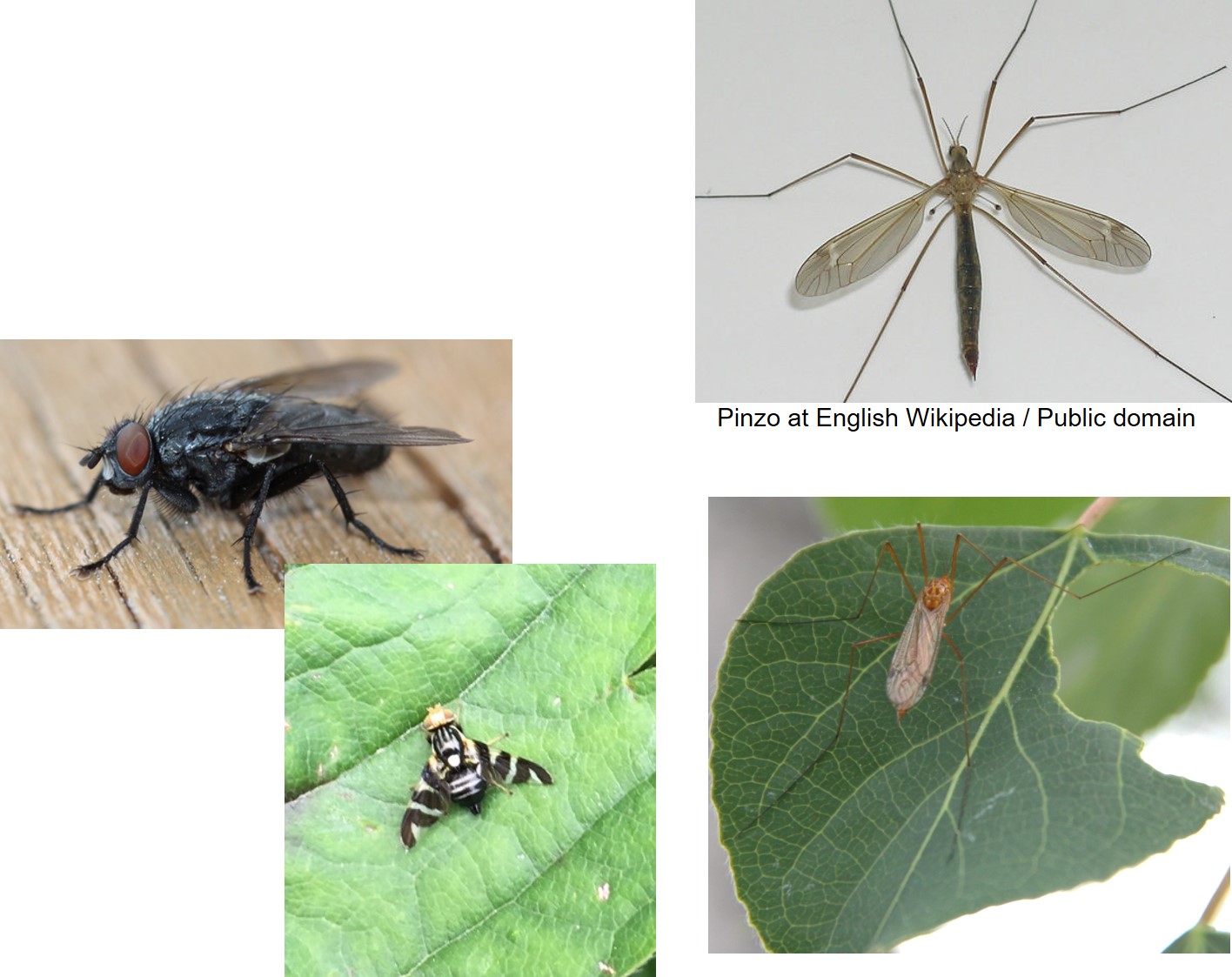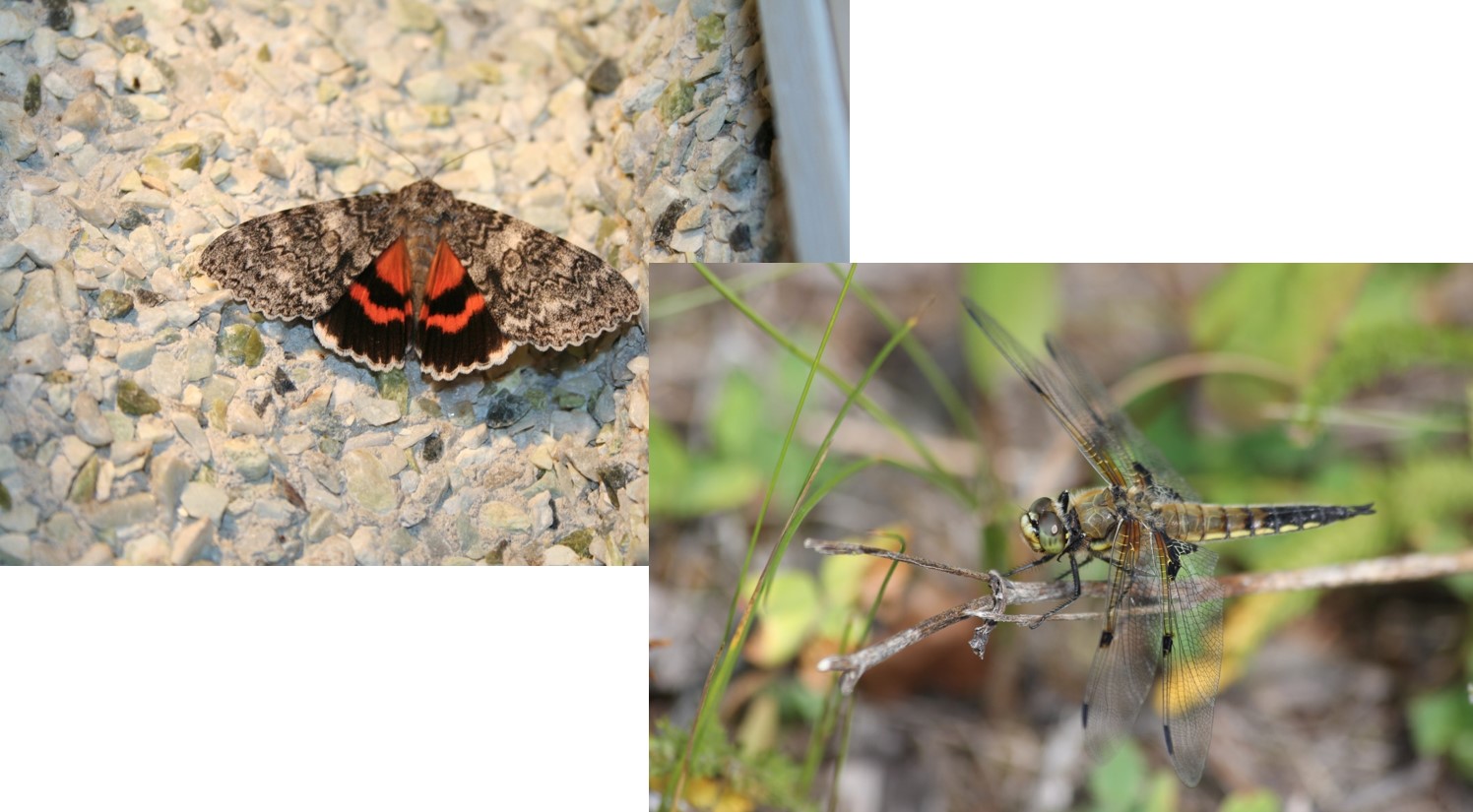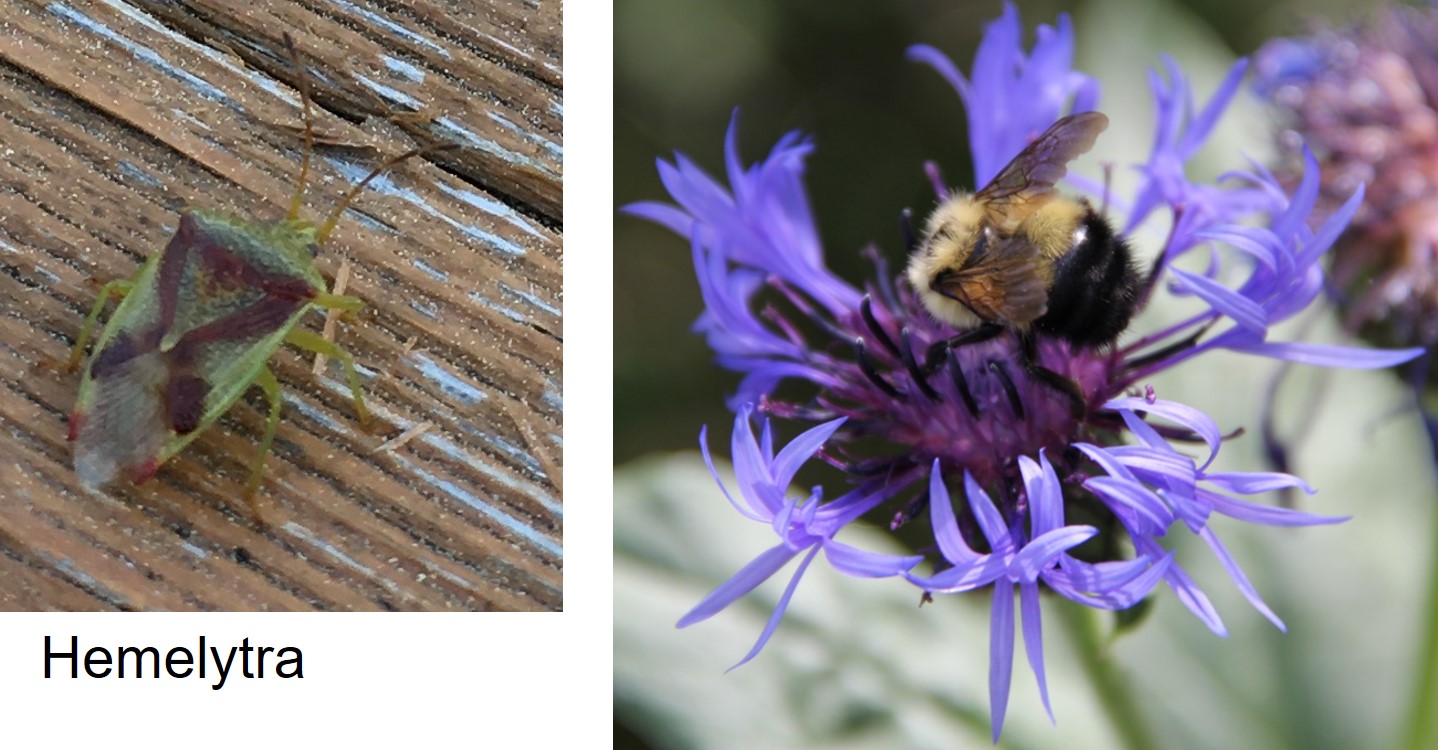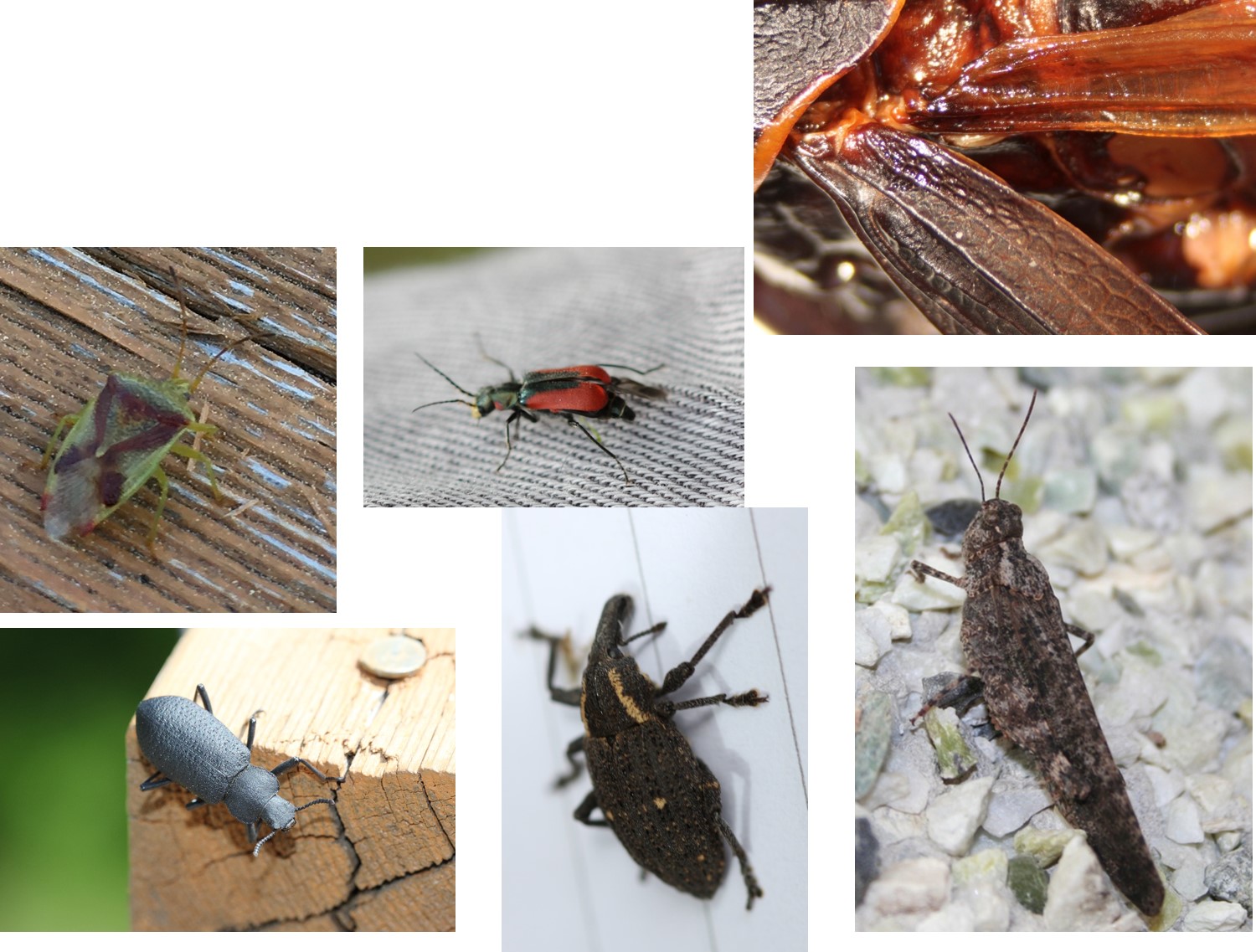26 Key Features of Wings
Key Features of Wings
How many pairs? … Here are some insects with only one pair of wings, and the second pair reduced to knobs called halteres. Halteres may or may not be large and obvious. They are easier to see on fresh (or freshly defrosted) specimens. Many insects tend to fold the wings when they die, making it tougher to see if there’s a second pair – once the specimen has dried out, DO NOT TOUCH! – it will break!!

Most insects have two pairs of wings, and sometimes it’s obvious.
Obvious ones:

In other cases, it is less obvious. Beetles, for example, generally have two pairs of wings. The front wings are modified into hard covers called elytra. In the top right photo, you can see the hind wings sticking out from underneath the elytra. Beetles fly using their hindwings, then fold them underneath elytra when not flying, to protect them from damage.

Another example occurs in the Hemiptera, or true bugs. The bases of their forewings are leathery, but the tips are membranous (work the same way as elytra in beetles). **Note that the forewings cross over each other, making an “X” on the dorsal surface of the bug.
Hymenoptera also have two pairs of wings, but their hind wings are hooked in to their forewings, and often folded longitudinally, so it can be tough to decide if your insect has one or two pairs of wings.
If in doubt, look at pictures, and please feel free to ask! This is not a stupid question!

Are the forewings hardened or leathery? … or “dissimilar to hind wings” in some keys.
You saw an example of this on the grasshopper in the anatomy lab. Grasshoppers have leathery forewings. Beetles have elytra (hardened forewings). True bugs have hemelytra (partially hardened/leathery forewings). All of these would count as “hardened or leathery forewings”, and “dissimilar to hind wings”.

Are the front and hind wings similar in size and or shape?
On the left are the wings of a termite and damselfly. Note that the front and hindwings look quite similar in size and shape. On the right, at the top, is a mayfly (front wing larger than hind wing). On the right, at the bottom, is a stonefly (hind wing larger than front wing, and a different shape).

Are the wings covered in scales? or hairs?
Moths and butterflies have wings covered in tiny, flat scales that give them colour patterns
Watch out for a few (e.g. the hummingbird clearwing moth feeding on a lilac) with clear patches on the wings. If you look closely, you will still see has scales around the edges!
Caddisflies (bottom right) look similar to moths and butterflies. Their front wings are covered in hairs, not scales (moths can also be hairy, but always have scales somewhere as well).



Feedback/Errata